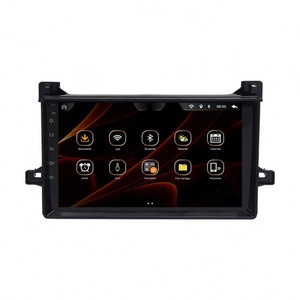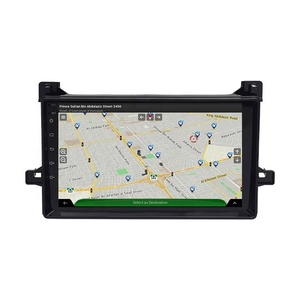(11661 products available)



































































































































































































Full-frame cars are vehicles with a conventional body-on-frame construction, where the body is built on top of a robust frame made of steel. This design offers several advantages, including enhanced durability and the ability to withstand heavy loads, making full-frame cars ideal for applications such as off-road driving, towing, and hauling. Full-frame cars used to be more common, but they have become less prevalent in passenger vehicles as manufacturers shift to unibody construction. Nonetheless, full-frame cars still have a significant market presence, particularly among SUVs and pickup trucks. Here are some types of full-frame cars:
Pickup trucks
These are light motor vehicles with open cargo beds at the back. They are excellent for hauling cargo, and their full frame construction provides the necessary strength to handle heavy loads. Some popular full-frame pickup trucks are the Ford F-150, Chevrolet Silverado 1500, and Ram 1500.
Full-size SUVs
Full-size SUVs are large vehicles designed to carry many passengers and cargo. They are built on the same platforms as full-frame cars. Their full-frame construction offers better handling and stability when towing heavy trailers. Examples of full-size SUVs include the Chevrolet Tahoe, Ford Expedition, and GMC Yukon.
Sports Utility Vehicles (SUVs)
These are vehicles designed for on-road and off-road driving. They are large vehicles with a higher ground clearance than regular cars. Most modern SUVs are built with unibody construction, but some SUVs, particularly the older models, are full-frame cars. The Jeep Wrangler and Toyota Land Cruiser are great examples of full-frame SUVs.
Vans
These are motor vehicles primarily designed for transporting passengers or cargo. Larger van models, such as the Ford Transit and Chevrolet Express, are built on full-frame car platforms to handle the stresses of carrying heavy loads and provide adequate towing capabilities.
Station wagons
These are long cars with a roof, an extended seating area, and a hatch door at the rear. Some older full-frame cars were built on full frames to provide a stable platform for handling and performance. An example of a full-frame station wagon is the Chevrolet Caprice wagon.
Manufacturers usually indicate the specifications of full-frame cars in the owner's manual. Here are some common specifications that a typical full-frame car will have:
Vehicle Dimensions:
Height: The vertical distance from the ground to the top of the vehicle. A taller vehicle may have a higher center of gravity and be more prone to tipping over, while a shorter vehicle may be more stable.
Width: The distance between the vehicle's sides. Wider vehicles may have more stability and be able to carry more cargo, while narrower vehicles may be more challenging to park and maneuver in tight spaces.
Length: The distance between the vehicle's front and rear. Longer vehicles may have more stability and be able to carry more cargo, while shorter vehicles may be more challenging to park and maneuver in tight spaces.
Weight:
The gross vehicle weight (GVW) is the car's weight when it's loaded with passengers and cargo. The full-frame car's weight affects its fuel efficiency, stability, and ability to accelerate and brake.
Wheel Size:
The diameter and width of a vehicle's wheels affect its performance and handling. Larger wheels may provide better traction and stability, while smaller wheels may be more challenging to maneuver in tight spaces.
Engine Specifications:
The type, size, and number of cylinders in a full-frame vehicle's engine affect its power and fuel efficiency. Larger engines may provide more power but be less fuel efficient than smaller ones.
Transmission Specifications:
The type and number of gears in a full-frame car's transmission affect its performance and fuel efficiency. Transmissions with more gears may provide smoother acceleration and better fuel efficiency than those with fewer gears.
Suspension System:
The type and configuration of the suspension system components on a full-frame car affect its ride quality and handling. Stiffer suspension systems may provide better handling, while softer systems may provide a smoother ride.
Towing Capacity:
The maximum weight the vehicle can tow is affected by its engine power, transmission, and suspension system. Don't exceed the towing capacity, as this can damage the vehicle and make it unsafe to drive.
Maintaining a full-frame car is essential to ensure it serves its purpose. Here are some maintenance tips:
Choosing a proper full frame car can be a daunting task for car buyers. Here are some tips to help them make an informed decision:
Understanding needs
Firstly, it is important to understand the user's needs. What are the main uses of the car? If it is used mostly for family trips, a full-frame SUV like the Chevrolet Tahoe is a good choice. If the user is a construction worker, a full-frame pickup like the Ford F-150 may be more useful. Understanding the needs makes choosing a suitable full-frame car easier.
Test driving
Test-driving different full-frame cars is important. Feel the handling, acceleration, and braking of each car. Check the comfort level of riding in each car. A test drive can help users feel the car's characteristics and performance, making it easier to choose.
Comparing fuel efficiency
Full-frame cars are generally not as fuel-efficient as other cars because of their large size. However, some models have better fuel efficiency than others. Check the manufacturer's fuel efficiency data to compare different full-frame cars. A car with better fuel efficiency can save users money on fuel in the long run.
Considering safety
Safety is always a priority. Check the safety ratings of full-frame cars from organizations like NHTSA and IIHS. See if the cars have advanced safety features, such as adaptive cruise control and automatic emergency braking. Choosing a safe car can protect the user and their family.
Evaluating cargo space
If users need a car with a lot of cargo space to transport goods or luggage, pay attention to the trunk space and rear seats of different full-frame cars. Some models may offer more flexible seating arrangements and cargo space. Choose a car that meets the user's cargo requirements.
Considering towing capacity
If users need to tow trailers or other heavy items, pay attention to the towing capacity of different full-frame cars. Some models have higher towing capacity and better towing performance. Choose a car that meets the user's towing needs.
It is not very common to replace a full steel frame car during repairs. Nonetheless, if it comes to that, here are some steps to follow:
Q1: Are there any electric car brands that use a full-frame construction?
A1: Traditionally, electric vehicles have not used full-frame construction. Nevertheless, some brands, like Rivian, utilize a full frame in their electric trucks and SUVs. As electric vehicle technology progresses, more electric vehicles may adopt full-frame designs, particularly in larger models.
Q2: Do all trucks and SUVs use full-frame construction?
A2: No, not all trucks and SUVs use full-frame construction. While it is more common in larger vehicles like trucks and SUVs, many modern SUVs and crossovers use unibody construction. This is especially true for smaller SUV models. Unibody construction provides advantages such as lighter weight and better fuel efficiency.
Q3: What is the difference between a full frame and a chassis cab?
A chassis cab is simply a vehicle without a body on top of the frame. A full frame car is a complete vehicle with a body on top of the frame. Essentially, a chassis cab is a full-frame vehicle without the upper body.
The web search volume for the keyword "full frame car" has shown significant fluctuations over the past year, with an average monthly web search volume of 90. Notably, there was a 56% increase in web search volume both over the past three months and over the past year, indicating growing interest in this category.
Analyzing the monthly search data, we observe that the volume remained stable at 90 web searches from December 2023 through April 2024, except for a minor increase to 110 web searches in February 2024. A noticeable dip occurred in June and July 2024, where web searches decreased to 70, before dropping further to 50 in August. However, interest rebounded strongly in October 2024, with web searches spiking to 210 before settling at 140 in November 2024. This pattern suggests a seasonal variation in interest, with peaks typically in the fall and a trough in the summer months.
The detailed trend analysis indicates that the interest in "full frame cars" is not only increasing but also exhibiting seasonal trends. The spike in October could be linked to specific market events or consumer behavior patterns, such as end-of-year sales promotions or increased consumer interest in vehicle upgrades before the holiday season. Understanding these patterns can help businesses in the vehicles and transportation sector tailor their marketing and stock strategies effectively.